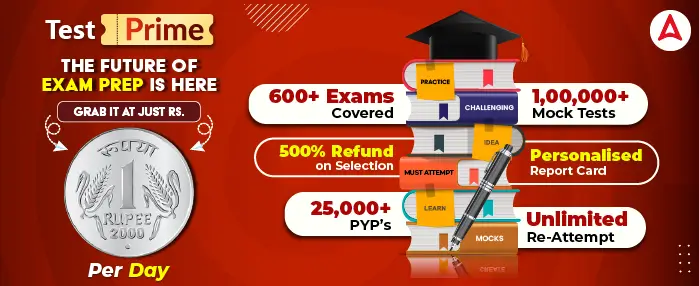Economics quiz, Economics quiz questions and answers, Economics quiz with answers, economics quiz questions and answers pdf, economics quiz for class 10, economics quiz questions, economics quiz in hindi, economics quiz for upsc, economics quiz with certificate, economics quiz pdf
Q1. The price elasticity of demand is the percentage change in _____ demanded divided by the percentage change in _____.
(A) supply, price
(B) quantity, price
(C) price, supply
(D) price, quantity
S1.Ans. (B) quantity, price
Q2. When price of a commodity increased by 3%, the quantity demanded decreased by 5%. The quantity is said to have
(A) price-elastic demand
(B) price-elastic supply
(C) price-inelastic demand
(D) price-inelastic supply
- (A) price-elastic demand
Q3. When price of a commodity increased by 5%, the quantity demanded decreased by 3%. The quantity is said to have
(A) price-elastic demand
(B) price-elastic supply
(C) price-inelastic demand
(D) price-inelastic supply
S3. (C) price-inelastic demand
Q4. When price of a commodity decreased by 4%, the quantity demanded increased by 4%. The quantity is said to have
(A) unit-elastic demand
(B) unit-elastic supply
(C) price equilibrium
(D) supply-demand equilibrium
S4.Ans. (A) unit-elastic demand
Q5. The term “recession” refers to the
(A) high employment
(B) high unemployment
(C) high supply and demand
(D) low supply and demand
S5.Ans. (B) high unemployment
Q6.What from the following measures a government can take to reduce inequality in the distribution of income?
(A) Progressive taxation
(B) Transfer payments
(C) Subsidize consumption of low-income groups
(D) All of the above
S6. Ans. (D) All of the above
Q7. Capital is one of the three fundamental inputs called factors of production which is a produced and durable input and is itself an output of an economy. Which from the following is NOT among capital?
(A) Clothing
(B) Machines
(C) Highways
(D) Buildings
S7.Ans. (A) Clothing
Q8. The economic term used to rank countries according to human development is
(A) GDP Per Capita
(B) GNP
(C) Gini
(D) HDI
S8.Ans. (D) HDI
Q9. The ultimate goal of economic science is to
(A) improve the living standard of people
(B) obtain the highest possible GDP
(C) minimize the unemployment
(D) obtain equilibrium between inflation and employment
S9.Ans. (A) improve the living standard of people
Q10. In which from the following questions, we can only examine the likely consequences of alternative policies, and the answer can be resolved only by discussions?
(A) Do higher interest rates slow the economy?
(B) Do higher interest rates lower inflation?
(C) Should a country lower tariff on imports?
(D) Does higher employment raise the inflation?
S10. Ans. (C) Should a country lower tariff on imports?
Q11. The conflict of interest between owners of a company and the management of the company is termed as
(A) company dilemma
(B) company trade-off
(C) owner-manager problem
(D) principal-agent problem
S11. Ans. (D) principal-agent problem
Q12. The term “oligopoly” means
(A) monopoly
(B) few sellers
(C) socialism
(D) many sellers
S12.Ans. (B) few sellers
Q13. In a monopolistic competition, a business finds its maximum-profit position where
(A) MR > MC
(B) MR < MC
(C) MR = MC
(D) MR + MC = 1
S13.Ans. (C) MR = MC
Q14. In a perfect competition, maximum profit occurs where marginal revenue equals
(A) price
(B) cost
(C) marginal cost
(D) marginal profit
S14.Ans. (A) price
Q15. A businessman or a company should accept investments that have _____ net present values.
(A) positive
(B) negative
(C) zero
(D) constant
S15.Ans. (A) positive
Q16. A businessman or a company should accept investments that offer rates of return _____ their opportunity costs of capital.
(A) equal to
(B) greater than
(C) less than
(D) related to
S16.Ans. (B) greater than
Q17. When price rises, the quantity demanded generally tends to fall because of:
- income effect
- substitution effect
(A) I only
(B) II only
(C) I or II
(D) I and II
S17.Ans. (D) I and II
Q18. If there are changes in factors other than a product’s own price that affect the quantity purchased, the phenomena is termed as
(A) Law of upward-sloping demand
(B) Law of downward-sloping demand
(C) shifts in demand
(D) In-equilibrium of supply and demand
S18.Ans. (C) shifts in demand
Q19. An increase in supply generally _____ price and _____ quantity demanded.
(A) lowers, raises
(B) raises, lowers
(C) lowers, lowers
(D) raises, raises
S19.Ans. (A) lowers, raises
Q20. Marginal revenue (MR) is _____ when demand is elastic, _____ when demand is unit-elastic, and _____ when demand is inelastic.
(A) zero, positive, negative
(B) zero, negative, positive
(C) positive, negative, zero
(D) positive, zero, negative
S20.Ans. (D) positive, zero, negative
Q21. To determine the correct level of GNP (Gross national product), it is necessary to:
(A) Add up the values of goods and services during one year
(B) Add up all savings
(C) Count all imports
(D) Add up the value of semi-finished goods
S21.Ans. (C) The market value of all goods and services produced in an economy
Q22. GNP is always
(A) Less than NNP
(B) Greater than NNP
(C) Equal to NNP
(D) None of these
S22.Ans.(B) Greater than NNP
Q23. The four factor payment are:
(A) Money, capital, salaries, and income
(B) Wages, rent, interest, and profits
(C) Money, power, prestige, and wealth
(D) Wages, interest, salaries, and income
S23.Ans.(B) Wages, rent, interest, and profits
Q24. We measure national income by this method
(A) Expenditure method
(B) Income method
(C) Product method
(D) All of the above
S24.Ans.(D) All of the above
Q25. Transfer payments means
(A) Bank loans
(B) The payment without work
(C) Tax payments
(D) Payments made to all factors of production
S25.Ans. (B) The payment without work
Q26. Which statement is true
(A) National Expenditure = National income
(B) National Expenditure = National income + National Production
(C) National Expenditure = National income + National Taxes
(D) National Expenditure = National income – Taxes
S26.Ans. (A) National Expenditure = National income
Q27. If we compare GDP and GNP, then
(A) GNP = GDP – net income from abroad
(B) GNP = GDP + net income from abroad
(C) GNP = NNP – net income from abroad
(D) GNP = NNP + net income from abroad
S27.Ans. (B) GNP = GDP + net income from abroad
Q28. A TV set purchased from a retail store is an example of
(A) Intermediate goods
(B) Capital goods
(C) Surplus goods
(D) Final goods
S28.Ans. (D) Final goods
Q29. GNP is
(A) Total sales in the economy
(B) Total monetary transactions in an economy
(C) The market value of all goods and services produced in an economy
(D) Total spending in an economy
S29.Ans. (C) The market value of all goods and services produced in an economy
Q30. GNP includes
(A) A loan from a bank
(B) A loan from one’s parents
(C) Gifts and Donations
(D) A broker’s commission
S30.Ans. (D) A broker’s commission
Q31. National Development Council was set up in:
(A) 1948
(B)1950
(C)1951
(D)1952
S31.Ans.(D)1952
Q32. Economic Planning is a subject: [Asstt Grade 1991]
(A) in the Union List
(B) in the State List
(C) in the Concurrent List
(D) unspecified in any special list
S32.Ans.(A) in the Union List
Q33. The National Development Council gets its administrative support from:
(A) Planning Commission
(B) Finance Commission
(C) Administrative Reforms Commission
(D) Sarkaria Commission
S33.Ans.(A) Planning Commission
Q34. The Five Year Plans of India intend to develop the country industrially through
(A) the public sector
(B) the private sector
(C) the public, private, joint and Cooperative sectors
(D) increasing collaboration with non-resident Indians
S34.Ans.(C) the public, private, joint and Cooperative sectors
Q35. The Planning Commission is
(A) a Ministry
(B) a Government department
(C) an Advisory body
(D) an Autonomous Corporation
S35.Ans.(C) an Advisory body
Q36. ‘Take off stage’ in an economy means: [CBI 1990]
(A) steady growth begins
(B) economy is stagnant
(C) economy is about to collapse
(D) all controls are removed
S36.Ans.(A) steady growth begins
Q37. Planning in India derives its objectives from:
(A) Fundamental Rights
(B) Directive Principles of State policy
(C) Fundamental Duties
(D) Preamble
S37.Ans.(B) Directive Principles of State policy
Q38. 70% of working population of India is engaged in:
(A) public sector
(B) primary sector
(C) secondary sector
(D) tertiary sector
S38.Ans.(B) primary sector
Q39. Who is called the ‘Father of Economics’ ?
(A) Max Muller
(B) Karl Marx
(C) Adam Smith
(D) None of these
S39.Ans.(C) Adam Smith
Q40. The concept of Five Year Plans in India was introduced by
(A) Lord Mountbatten
(B) Jawaharlal Nehru
(C) Indira Gandhi
(D) Lal Bahadur Shastri
S40.Ans.(B) Jawaharlal Nehru








